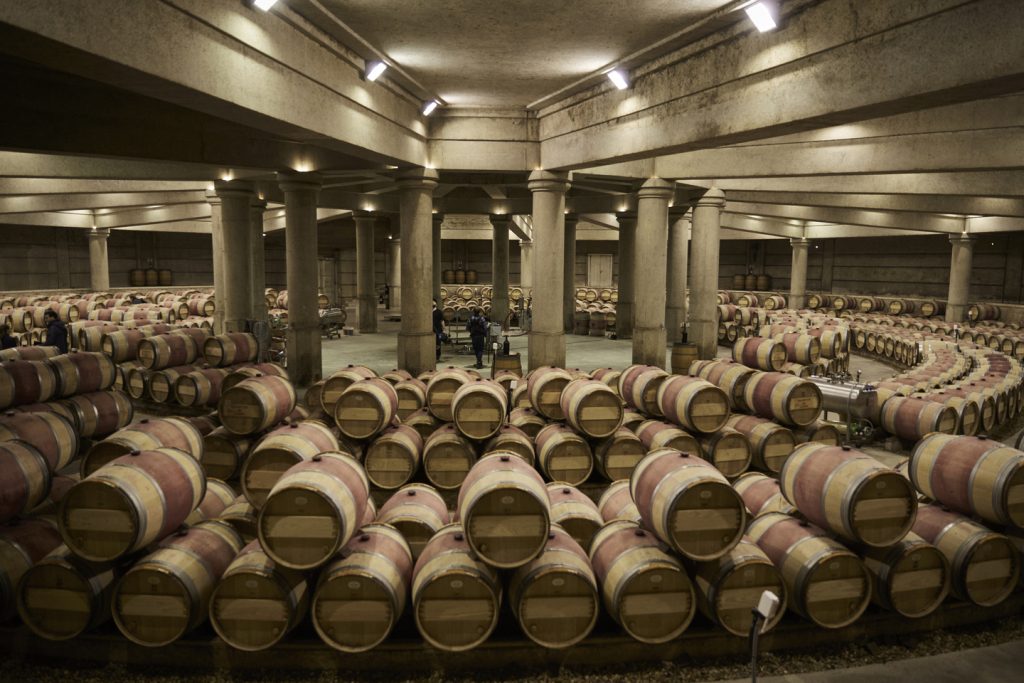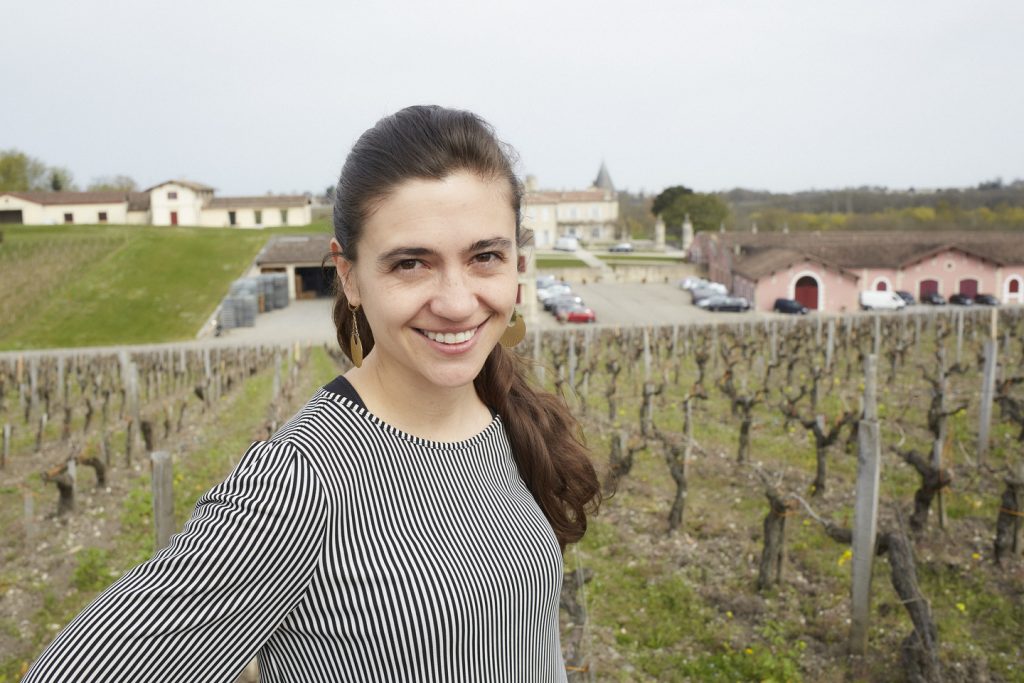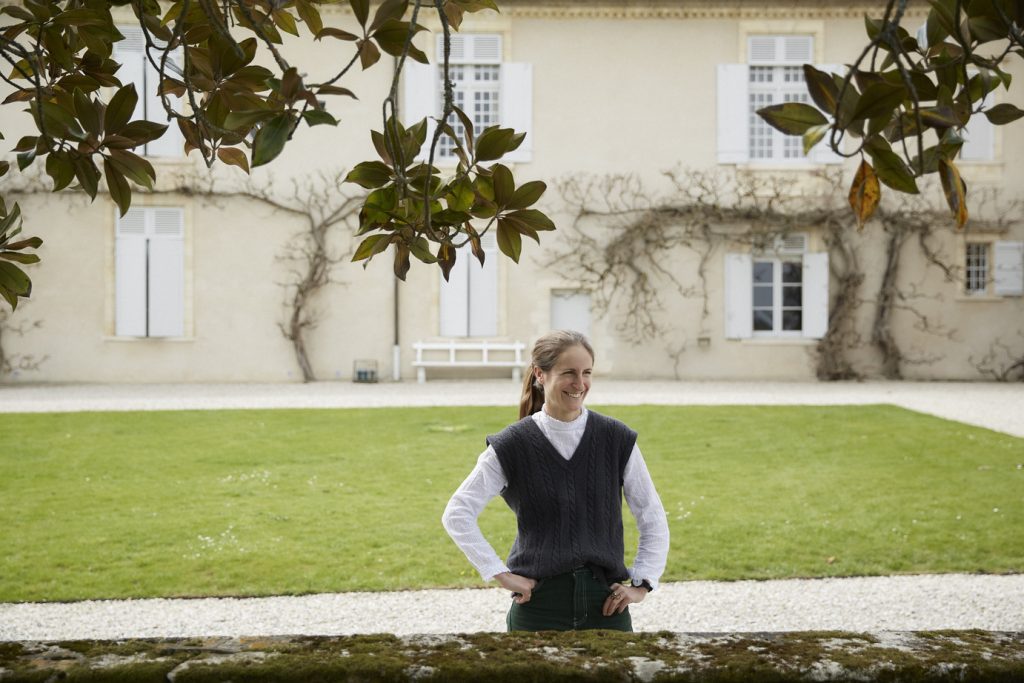Lafite for the future
Author: Sarah Adwalpalkar

Château Lafite Rothschild has a storied history, but the women running it are decidedly future-focused, says Sarah Adwalpalkar. Here, she reports from a day on the ground at this Pauillac First Growth.
It’s an early spring morning in March 2023 and we’re rolling through the gates of Château Lafite Rothschild. The sun glints off the château’s weathervane, which bears the Rothschild family’s five-arrow symbol. I’m with noted photographer Chris Floyd and his crew (and no fewer than 10 bags of equipment). We’re just weeks away from the launch of Bordeaux 2022 En Primeur, and we’re here to meet some of the women running this renowned First Growth.
Lafite is the jewel in the crown of the Domaines Barons de Rothschild (Lafite) group, the family portfolio of wineries that also includes nearby Ch. Duhart-Milon, Ch. L’Evangile in Pomerol and Ch. Rieussec in Sauternes – along with famed estates in the South of France, Argentina, Chile and China.
First impressions
As we arrive at Lafite, I’m struck by its quiet industrialism rather than its grandeur: groups of workers, mainly female, tend the vines; renovations are underway ahead of the upcoming En Primeur season.
We first meet with Manuela Brando, a self-effacing Columbian who oversees research and development here. She has been with the company for over 10 years. As she begins to speak, her knowledge is evident, as is her enthusiasm for safeguarding the estate for the future.

The 2022 vintage brought extreme weather across all of Bordeaux. The year’s excessive heat and drought seem to be becoming the norm here. How, then, are Manuela and her team to combat such extremes in the future?
Her most interesting answer for me relates to the work they are doing in planting non-native grape varieties and testing their potential to brave a scorching summer. Varieties from the South of France, Greece, Portugal and even Georgia have been planted in an experimental plot. The team will need to wait 10 years to see the fruits of their labour and to judge whether they could be viable options for future Bordeaux blends.
The Rothschilds have owned Lafite since 1868. I find it impressive that an estate of this age would go to such lengths to ensure consistently excellent wines. Manuela admits that it’s “a risk”. Clearly, it’s one that they are willing to take.
On safari
Saskia de Rothschild is the Chair of the family group, the first woman to have taken up the position in six generations. When we sit down with her, she speaks passionately about the need for diversification. They need to work differently in order to bridge the gap between now and the future, she believes. She has clearly inherited this passion from her father, Baron Eric de Rothschild, who had spearheaded the introduction of cows into the estate’s surrounding marshlands.
Being something of a cow-enthusiast myself, I’m keen to meet these famous vaches marines (roughly translated as “sea cows”, although these ones stay firmly on dry land). Saskia graciously obliges, jumping in the car with us to seek out the typically shy creatures.
“This is like a safari!” she cheerfully notes as we glance at them through the trees.

The cows help to graze and maintain the marshland and promote biodiversity here. Their manure can be used for biodynamic treatments in the vineyard. The contrast between neat, elegant rows of vines and the rugged earthiness of sprawling marshland highlights to me how two seemingly distinct ideas can work in tandem.
The “invisible hand”
Our day at Lafite concludes with a tour of the chai circulaire, a concrete barrel-room designed by Ricardo Bofill and constructed in 1987. It’s a striking structure, entirely circular, punctuated with thick pillars and lined with wine barrels. The damp smell underground is comforting and full of promise for the vintage that lies ahead.
Manuela comments on the “invisible hand” of the estate. It helps everything progress, she says, while remaining unnoticeable. This statement resonates with me, as in a world where greenwashing is increasingly prevalent and companies spar to demonstrate their sustainable credentials, understated and even invisible seem like the right strategy.
Our day concludes as we send our drone out over the sunset hill which gives Lafite its name: the term fite means “mound” or “hillock” in historic French. It gives me a moment to ponder what Saskia and Manuela had mentioned: that “everything is related”. I watch how the footage spans the vineyards, the marshlands, meadows of wildflowers squeezed between the vines, and the château overseeing it all.
Browse our range of wines for the cellar from Château Lafite Rothschild.



Sounds absolutely delightful. Is the drone footage available to view, by any chance?
Hi Steve, many thanks for your comment. You can view the full YouTube video here: https://www.youtube.com/watch?v=XkCWbJJqLrQ
All the best,
Charlie